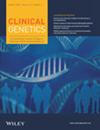Disorders of somatic mosaicism (DoSMs) are rare genetic disorders arising from postzygotic alteration leading to segmental/nonsegmental disease. Current professional guidelines for standardized variant interpretation focus on germline and cancer variants, making them suboptimal for DoSM variant interpretation. The Brain Malformations Variant Curation Expert Panel (BMVCEP) modified existing guidelines to account for brain-specific disorders of somatic mosaicism, but applicability to other DoSM presentations is limited. At Washington University in St. Louis School of Medicine, we have adopted the BMVCEP interpretation framework but suggested alterations that make it more suitable for generalized DoSM variant classification. These modifications include (1) expanding applicability beyond genes associated with brain malformations, (2) introduction of a criterion to interpret truncating variants at the C-terminus of gain of function genes, (3) establishment of a variant allele fraction (VAF) cutoff for applying de novo criteria, and (4) demonstration that in silico prediction tools are relevant to interpretation of gain of function missense variants. Furthermore, modifications to BMVCEP guidelines reduce the number of variants classified as uncertain. The variant classification considerations that we propose have the potential to improve the accuracy of somatic variant classification, better inform clinical care, and may benefit clinical laboratories also conducting DoSM testing.


